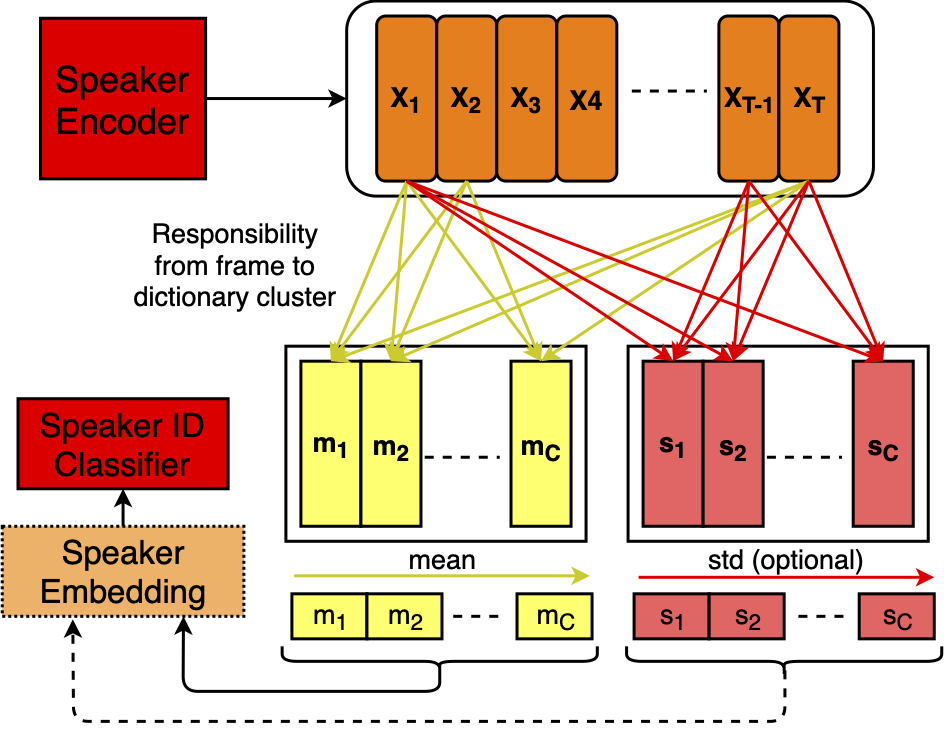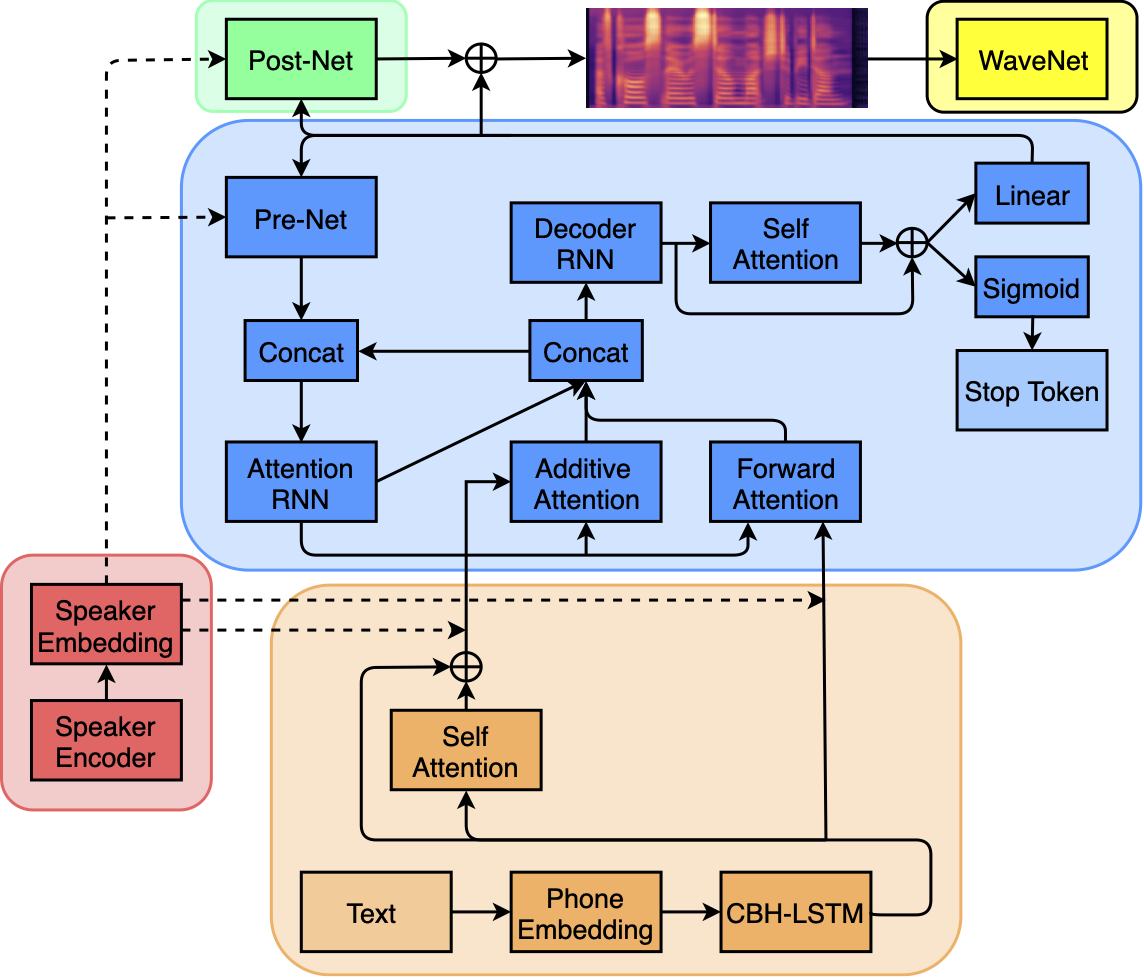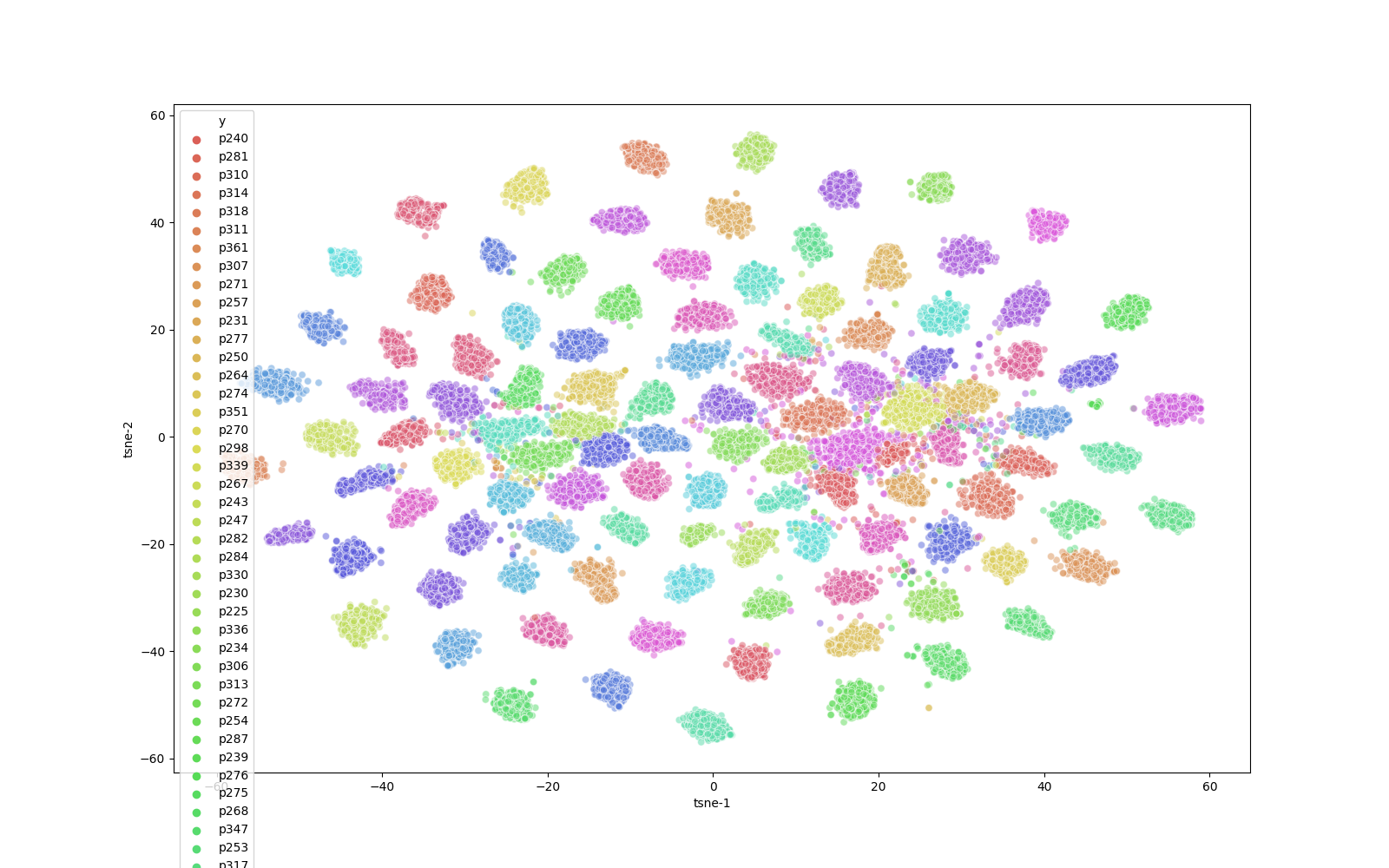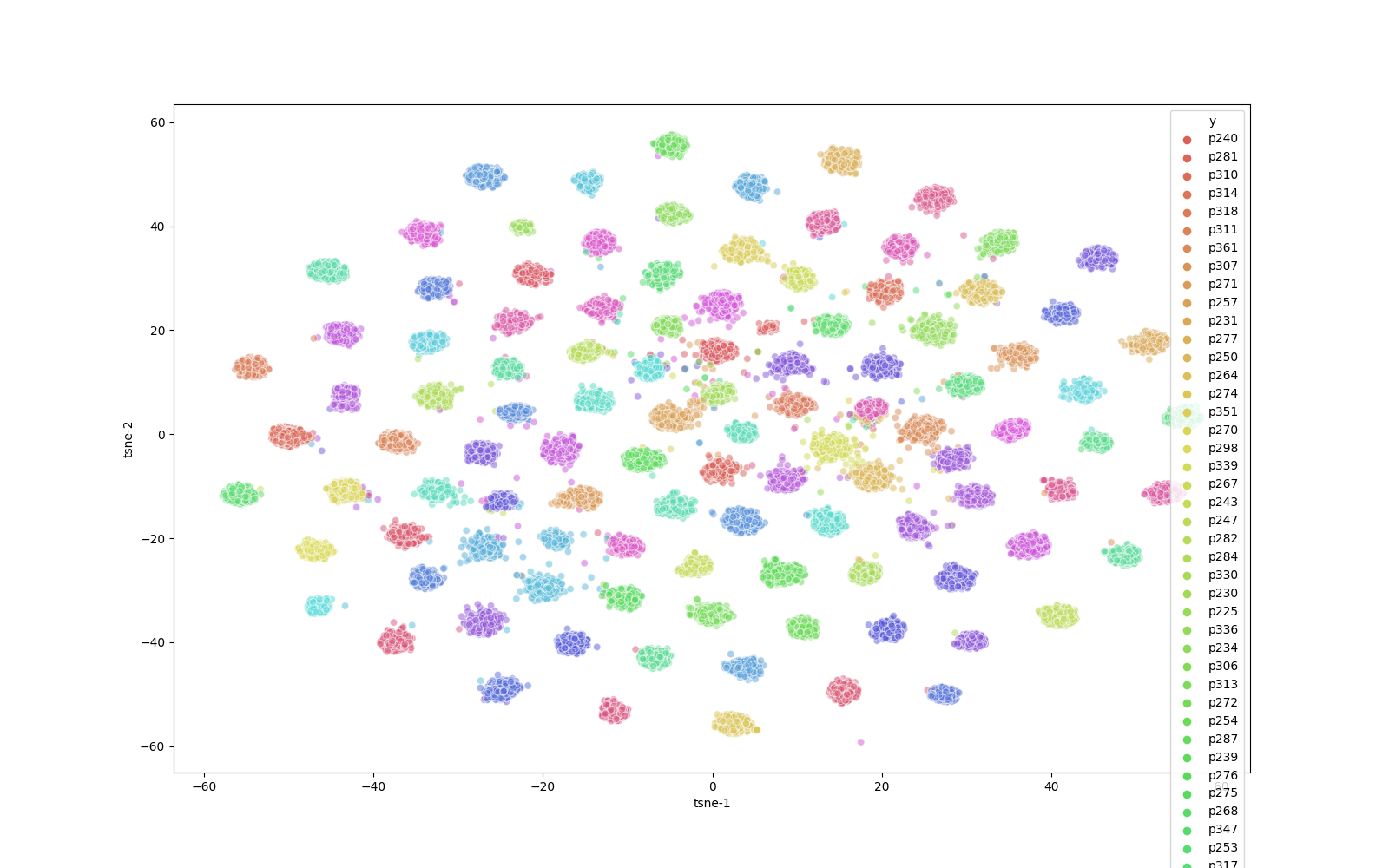jefflai108 / Pytorch Kaldi Neural Speaker Embeddings
Programming Languages
Projects that are alternatives of or similar to Pytorch Kaldi Neural Speaker Embeddings
pytorch-kaldi-neural-speaker-embeddings
A light weight neural speaker embeddings extraction based on Kaldi and PyTorch.
The repository serves as a starting point for users to reproduce and experiment several recent advances in speaker recognition literature.
Kaldi is used for pre-processing and post-processing and PyTorch is used for training the neural speaker embeddings.
I want to note that this repo is not meant for keeping track of state-of-the-art on speaker recognition, and most likely the models will be considered outdated in a few months (or sooner :().
This repository contains a PyTorch+Kaldi pipeline to reproduce the core results for:
- Exploring the Encoding Layer and Loss Function in End-to-End Speaker and Language Recognition System
- A Novel Learnable Dictionary Encoding Layer for End-to-End Language Identification
With some modifications, you can easily adapt the pipeline for:
- Angular softmax for short-duration text-independent speaker verification
- Utterance-level aggregation for speaker recognition in the wild
- Margin Matters: Towards More Discriminative Deep Neural Network Embeddings for Speaker Recognition
- Spatial Pyramid Encoding with Convex Length Normalization for Text-Independent Speaker Verification
If one wants to go further, take a look at our recent work on multi-speaker text-to-speech, where the same speaker embeddings are employed to model speaker characterisitcs in a text-to-speech system.
Lastly, kindly cite our paper(s) if you find this repository useful. Cite both if you are kind enough!
@article{villalba2019state,
title={State-of-the-art speaker recognition with neural network embeddings in nist sre18 and speakers in the wild evaluations},
author={Villalba, Jes{\'u}s and Chen, Nanxin and Snyder, David and Garcia-Romero, Daniel and McCree, Alan and Sell, Gregory and Borgstrom, Jonas and Garc{\'\i}a-Perera, Leibny Paola and Richardson, Fred and Dehak, R{\'e}da and others},
journal={Computer Speech \& Language},
pages={101026},
year={2019},
publisher={Elsevier}
}
@article{cooper2019zero,
title={Zero-Shot Multi-Speaker Text-To-Speech with State-of-the-art Neural Speaker Embeddings},
author={Cooper, Erica and Lai, Cheng-I and Yasuda, Yusuke and Fang, Fuming and Wang, Xin and Chen, Nanxin and Yamagishi, Junichi},
journal={arXiv preprint arXiv:1910.10838},
year={2019}
}
One should also check out the very nicely written TensorFlow version by Yi Lu.
Overview
Neural speaker embeddings: Encoder --> Pooling --> Classification
LDE pooling method illustration:
Requirements
pip install -r requirements.txt
Please also download and properly setup Kaldi. If you are stuck in this phase, this repository is liekly not for you.
Getting Started
The bash file pipeline.sh contains the 12-stage speaker recognition pipeline, including feature extraction, the neural model training and decoding/evaluation. A more detailed description of each step is described in pipeline.sh. To get started, simply run:
./pipeline.sh
Datasets
The models are trained on VoxCeleb I+II, which is free for downloads (the trial lists are also there). One can easily adapt pipeline.sh for different datasets.
Pre-Trained Models
Due to Youtube's privacy policy, unfortunately I am not allowed to upload pre-trained models for VoxCeleb I+II.
Benchmarking Speaker Verification EERs
| Embedding name | dimension | normalization | pooling type | train objective | EER | DCFmin0.01 |
|---|---|---|---|---|---|---|
| i-vectors | 400 | no | mean | EM | 5.329 | 0.493 |
| x-vectors | 512 | no | mean, std | Softmax | 3.298 | 0.343 |
| x-vectorsN | 512 | yes | mean, std | Softmax | 3.213 | 0.342 |
| LDE-1 | 512 | no | mean | Softmax | 3.415 | 0.366 |
| LDE-1N | 512 | yes | mean | Softmax | 3.446 | 0.365 |
| LDE-2 | 512 | no | mean | ASoftmax (m=2) | 3.674 | 0.364 |
| LDE-2N | 512 | yes | mean | ASoftmax (m=2) | 3.664 | 0.386 |
| LDE-3 | 512 | no | mean | ASoftmax (m=3) | 3.033 | 0.314 |
| LDE-3N | 512 | yes | mean | ASoftmax (m=3) | 3.171 | 0.327 |
| LDE-4 | 512 | no | mean | ASoftmax (m=4) | 3.112 | 0.315 |
| LDE-4N | 512 | yes | mean | ASoftmax (m=4) | 3.271 | 0.327 |
| LDE-5 | 256 | no | mean | ASoftmax (m=2) | 3.287 | 0.343 |
| LDE-5N | 256 | yes | mean | ASoftmax (m=2) | 3.367 | 0.351 |
| LDE-6 | 200 | no | mean | ASoftmax (m=2) | 3.266 | 0.396 |
| LDE-6N | 200 | yes | mean | ASoftmax (m=2) | 3.266 | 0.396 |
| LDE-7 | 512 | no | mean, std | ASoftmax (m=2) | 3.091 | 0.303 |
| LDE-7N | 512 | yes | mean, std | ASoftmax (m=2) | 3.171 | 0.328 |
Using Speaker Embeddings for Tacotron2 Speaker Adaptation
Speaker Embedding Space Visualization (cluster by speakers)
i-vectors (baseline)
LDE
Benchmarking TTS MOS scores
| Embedding name | Naturalness dev | Naturalness test | Similarity dev | Similarity test |
|---|---|---|---|---|
| vocoded | 3.41 | 3.55 | 2.79 | 2.82 |
| x-vectorsN | 3.19 | 3.19 | 1.86 | 2.37 |
| LDE-1 | 3.16 | 3.21 | 2.05 | 2.34 |
| LDE-1N | 3.13 | 3.46 | 1.97 | 2.45 |
| LDE-2 | 3.28 | 3.35 | 2.00 | 2.37 |
| LDE-2N | 3.19 | 3.33 | 2.00 | 2.35 |
| LDE-3 | 3.24 | 3.48 | 1.88 | 2.46 |
| LDE-3N | 3.16 | 3.33 | 2.00 | 2.37 |
| LDE-4 | 3.10 | 3.29 | 2.00 | 2.31 |
| LDE-4N | 3.20 | 3.29 | 1.98 | 2.39 |
| LDE-5 | 3.26 | 3.40 | 1.99 | 2.45 |
| LDE-5N | 3.07 | 3.37 | 2.02 | 2.41 |
| LDE-6 | 3.25 | 3.33 | 1.95 | 2.43 |
| LDE-6N | 3.29 | 3.23 | 1.94 | 2.39 |
| LDE-7 | 3.03 | 3.18 | 1.86 | 2.28 |
| LDE-7N | 3.02 | 3.24 | 2.02 | 2.42 |
Credits
Base code written by Nanxin Chen, Johns Hopkins University
Experiments done by Cheng-I Lai, MIT




